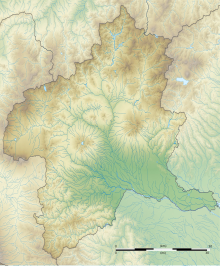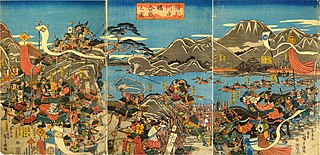
The Battles of Kawanakajima were a series of battles fought in the Sengoku period of Japan between Takeda Shingen of Kai Province and Uesugi Kenshin of Echigo Province from 1553 to 1564. Shingen and Kenshin contested each other for control of the plain of Kawanakajima between the Sai River and Chikuma River in northern Shinano Province, located in the present-day city of Nagano. The battles were triggered after Shingen conquered Shinano, expelling Ogasawara Nagatoki and Murakami Yoshikiyo, who subsequently turned to Kenshin for help.
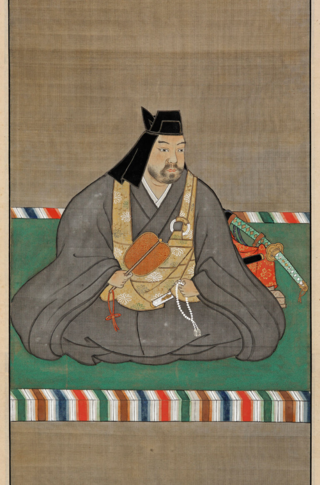
Nagao Kagetora, later known as Uesugi Kenshin, was a Japanese daimyō. He was born in Nagao clan, and after adoption into the Uesugi clan, ruled Echigo Province in the Sengoku period of Japan. He was one of the most powerful daimyō of the Sengoku period. Known as the "Dragon of Echigo", while chiefly remembered for his feats and prowess on the battlefield as a military genius and war hero, Kenshin is also regarded as an extremely skillful administrator who fostered the growth of local industries and trade, and his rule saw a marked rise in the standard of living of Echigo.

Murakami Yoshikiyo was a Japanese samurai from the Murakami clan and retainer of the Uesugi clan during the Sengoku period of the 16th century. Yoshikiyo followed in fighting against both Takeda Nobutora and his son Takeda Shingen. Yoshikiyo was also a very close ally under Uesugi Kenshin and one of Shingen's bitterest opponents for his high kill-counts in their conflicts.

Takeda Katsuyori was a Japanese daimyō of the Sengoku period, who was famed as the head of the Takeda clan and the successor to the legendary warlord Takeda Shingen. He was son-in-law of Hojo Ujiyasu, daimyō of Hojo clan.
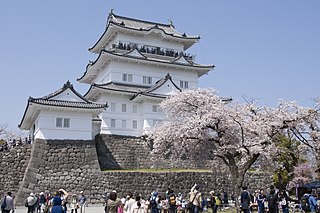
The third Siege of Odawara occurred in 1590, and was the primary action in Toyotomi Hideyoshi's campaign to eliminate the Hōjō clan as a threat to his power. The months leading up to it saw hasty but major improvements in the defense of the castle, as Hideyoshi's intentions became clear. Thus, despite the overwhelming force brought to bear by Hideyoshi, the siege saw little actual fighting.
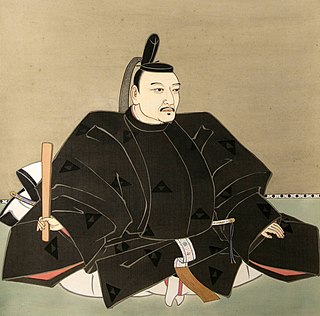
Hōjō Ujimasa was the fourth head of the later Hōjō clan, and daimyō of Odawara. Ujimasa succeeded the territory expansion policy from his father, Hojo Ujiyasu, and achieved the biggest territory in the clan's history.

Uesugi Norimasa was a daimyō of feudal Japan from Yamanouchi branch Uesugi clan and held the post of Kantō Kanrei, the shōgun's deputy in the Kantō region. He was the adoptive father of Uesugi Kenshin, one of the most famous warlords in Japanese history.
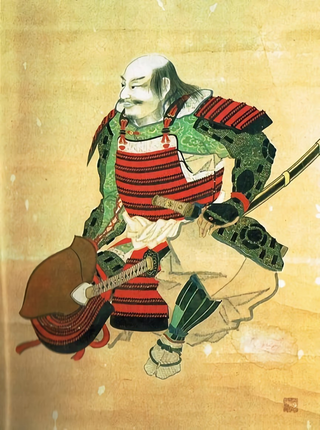
Naitō Masatoyo also known as Naitō Masahide was a Japanese samurai of the Sengoku period. He was known as one of the "Twenty-Four Generals of Takeda Shingen". Masatoyo was the second son of Takeda Nobutora's senior retainer, Kudō Toratoyo. He was first called Kudō Sukenaga. The family's fortunes fell when Toratoyo lost favor with Nobutora and was killed by him.

Hōjō Ujiyasu was a daimyō (warlord) and third head of the Odawara Hōjō clan. Known as the "Lion of Sagami", he was revered as a fearsome samurai and a cunning man. He is famous for his strategies of breaking the siege from Takeda Shingen and Uesugi Kenshin. A son of Hōjō Ujitsuna, his only known wife was Imagawa Yoshimoto's sister, Zuikei-in. Among his sons are Hōjō Ujimasa and Uesugi Kagetora.
Uesugi Kagetora was the seventh son of Hōjō Ujiyasu; known as Hōjō Saburō, he was adopted by Uesugi Kenshin, and was meant to be Kenshin's heir. However, in 1578, he was attacked in his castle at Otate by Uesugi Kagekatsu—Kagetora's respective brother-in-law—and was subsequently defeated. Kagetora committed suicide the following year in Samegao Castle.
The siege of Shika castle, which took place in September 1547, was one of many battles fought in Takeda Shingen's bid to seize control of Shinano Province.

The 1547 Battle of Odaihara was one of a series of battles waged by Takeda Shingen in his long campaign to conquer Shinano province. In this particular encounter he was fighting the forces of Uesugi Norimasa, who was based in Echigo province but had decided to intervene in Shinano to prevent Shingen from overrunning the whole province. The Uesugi army attempted to relieve the castle of Shika, which Shingen had besieged, but were attacked and defeated at Odaihara on 19 September 1547.
The 1578 siege of Otate took place following the sudden death of Uesugi Kenshin. Kenshin had requested that the inheritance be split between his nephew, Uesugi Kagekatsu, and his adopted son Uesugi Kagetora. This conflict happened because of neither heirs being born with the Uesugi name. Kagekatsu was the biological son of Nagao Masakage and Kagetora was biological son of Hojo Ujiyasu.

Kamiizumi Nobutsuna,, born Kamiizumi Ise-no-Kami Fujiwara-no-Hidetsuna, was a samurai in Japan's Sengoku period famous for creating the Shinkage-ryū school of combat. He is also well known as Kamiizumi Isenokami which was his name as a samurai official for a period of time.

Mogami Yoshiaki was a daimyō of the Yamagata Domain in Dewa Province, in the late Sengoku and early Edo periods. He was known as the "Fox of Dewa".
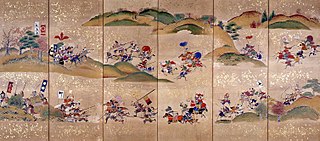
The Siege of Hasedō (長谷堂城の戦い) was one of a series of battles fought in the far north of Japan's main island of Honshū contemporaneous with the famous and decisive campaigns between Tokugawa Ieyasu and Ishida Mitsunari further south.

Minowa Castle was a "hirayama"-style (castle located in the Misato neighborhood of the city of Takasaki, Gunma Prefecture, Japan. The ruins have been protected by the central government as a National Historic Site since 1987.
Nagano Narimasa was a Japanese samurai retainer of the Uesugi clan during the Sengoku period and lord of Gunma. He was known for building Minowa Castle in 1526, and his skill at castle defense.

Matsushiro Castle, formerly known as Kaizu Castle, is a Japanese castle located in former Matsushiro town, now part of Nagano City. The site is a registered National Historic Site of Japan.
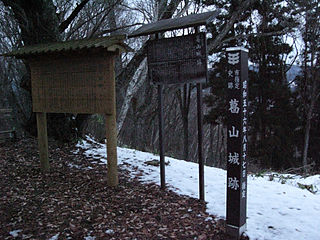
The siege of Katsurayama in March 1557 was fought between the forces of the Japanese daimyō Takeda Shingen and Uesugi Kenshin as part of the Kawanakajima campaigns. Katsurayama Castle was a strategically vital Uesugi stronghold in the contested Shinano Province and, when it was isolated from reinforcements due to late snow in early 1557, the Takeda clan used this opportunity to attack it. Although the castle garrison, consisting of the Ochiai clan and elements of the Murakami clan, defended Katsurayama furiously, the Takeda forces under Baba Nobuharu eventually stormed into the castle. Most of the garrison was killed in combat, while the families of the defenders committed mass suicide and the castle was burned to the ground.
